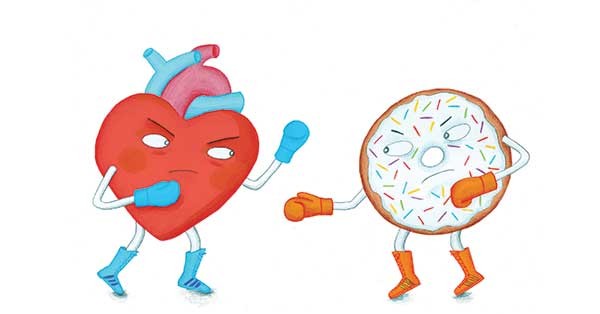Like snowflakes, but a lot more lethal, no two heart attacks are alike. Take the stories of Nicolas Brenner of Woodstock and Alexander Cohen of Clinton Corners. Brenner, an artist and lifelong athlete at 67, was hiking Overlook Mountain about two months ago when he noticed his heart racing—something that had never happened before. "I'd never taken a medication in my life," says Brenner. "I had low blood pressure, low cholesterol. I'm a vegetarian and I don't smoke. You name the sport, I play it—tennis, biking, racquetball. Every checkup I've gone to has been perfect, and when a doctor asks about medical history I've always said, 'There is none.'" Another unlikely candidate for heart disease and a physician by trade, Cohen (whose name, like Brenner's, has been changed for anonymity) has always been trim and active. He did, though, have a few silent risk factors, like higher than normal cholesterol. But when Cohen, then 62, was tromping through horse pastures 10 years ago after the first big snow of the season, he hardly expected to develop the nausea and fatigue that, in his case, signaled a heart attack. Although neither man had the classic symptoms of chest or arm pain, both were surprised to discover at the hospital that they had major blockages in their left descending coronary artery—known as the widow maker for its capacity to strike a deadly blow. The protocol: emergency angioplasty, involving a balloonlike dilation of the artery and the insertion of a stent to prop the vessel open and restore proper blood flow. "They kept me in the hospital for three days and then shipped me out with all this medication," says Brenner. "And here I am. I'm drumming and feeling fine and ready to play baseball next week."
An Enigmatic Disease
Not everyone is as lucky as Brenner and Cohen. Heart disease is the number one killer in the US—the leading cause of death for both men and women. Coronary heart disease, or blockage to the arteries—the most common type of heart disease—kills more than 385,000 people each year and costs the US about $109 billion annually in health-care services, medication, and lost work time. Despite the dire numbers, we've made quite a bit of progress in this arena, though we still have a long way to go. According to the Centers for Disease Control and Prevention, the death rate from heart disease in the US dropped by 50 percent from 1980 to 2000, likely due to advances in medical treatments and a reduction in risk factors like smoking. Yet the specter of the ailing heart looms large, and many aspects of the disease remain elusive—leaving room for experts to debate its causes and to challenge long-held beliefs. A 2012 book, The Great Cholesterol Myth: Why Lowering Your Cholesterol Won't Prevent Heart Disease—and the Statin-Free Plan that Will, claims that we've had our eye on the wrong ball all along; the authors, nutritionist Jonny Bowden and cardiologist Stephen Sinatra, say that not cholesterol but inflammation and sugar are the real villains in heart disease. The book has Paleo Diet advocates and cheeseburger lovers rejoicing. But not everyone is willing to toss away decades of research finding a strong correlation between elevated cholesterol and heart disease.
Controversies like the one over cholesterol may rattle experts who stand on opposite ends of the opinion spectrum, but they serve an important purpose: They reveal the disease's complexity. Why do many people suffer from heart attacks despite the absence of common risk factors like high cholesterol and high blood pressure? Why do some lucky folks metabolize saturated fats more easily while others experience a rise in LDL cholesterol (the "bad" cholesterol) just looking at a pint of ice cream? "Heart disease is multifactorial," says David Weinreich, MD, a cardiologist practicing in Poughkeepsie with the Hudson Valley Heart Center group. "We know that cigarette smoking aggravates it, as do high-fat diets, lack of exercise, and weight. Stress plays a role, and family history is a factor." Some variables you can change, like diet and lifestyle, but others are immutable—like older age and simply being male (men are twice as likely as women to die from heart disease). And some variables are just plain mysterious. Says Weinreich, "There's more that we don't know than what we do know about heart disease."
Flames of a Debate
In the case of Cohen, high cholesterol was not the only lurking demon; he also had another quiet nemesis in his bloodstream. It was C-reactive protein (CRP), a bio-marker of inflammation. As he knew from a simple blood test, a painful condition in Cohen's shoulders had elevated this number, which researchers have linked to increased heart disease risk. "My C-reactive protein was off the charts," recalls Cohen. Could this have been a tipping-point variable in the constellation of elements that culminated in his heart attack on that cold December day?
Inflammation has been a hot topic in heart disease research for the past decade or so. A number of studies—including one published in the New England Journal of Medicine in 2002— have found high CRP levels to be a better predictor of heart attacks than LDL cholesterol. Whether or not inflammation from one area in the body (e.g., the shoulder) can migrate and affect another site (the coronary arteries) is a matter of debate without a lot of research behind it. But according to integrative MDs like Dr. Kenneth Bock of Red Hook, evidence is mounting that inflammation can have a pervasive quality. "Inflammation usually doesn't affect only one place, although it may affect one place more than others," says Bock. "As much as medicine likes to categorize things, inflammation can cross organ boundaries, as we know from systemic inflammatory disorders like autism."
Weinreich, whose province is the heart, may not take the same holistic viewpoint as Bock, but he cites supporting evidence. "We know that people with chronic inflammatory states like rheumatoid arthritis and lupus have more heart disease," says Weinreich. "We don't know if it's CRP by itself that causes the damage, but it's part of the building process of arterial plaque. There are other cellular elements involved: cytokines, macrophages, interleukin-6, tissue necrosis factor. These are all intimately involved in the formation of plaques—active, hot plaques that light up under scans."
Whatever science has to say about cholesterol or inflammation, one thing is clear: Heart disease does not happen without plaque—and plaque is a complex dance of both cholesterol and inflammation. Think, for a minute, about your endothelium. That's the delicate, one-cell-thick lining of every blood vessel in your body. If something damages this cellophane-like membrane—it could be high blood pressure, toxins from smoking or pollution, or any number of antagonists—LDL cholesterol from the blood stream lodges into the area, perhaps in an effort to repair it. The body then views it as a sore and launches an attack with its best arsenal: the inflammatory response. Eventually, a scab-like fibrous cap grows over the site to contain it, and the plaque formation is complete. At this point the inflammation can quiet down and the plaque can remain stable for years, contributing only to a narrowing of the artery. Or it can become unstable and burst, triggering the blood clots that can block a narrowed artery and bring on a heart attack. In the intricate chain of cause and effect, it's hard to tell who the real culprits are—toxins, cholesterol, inflammation? Mainstream science literature and how-to books like to zero in on just one variable, claiming to know the secret to health. More likely, all of these factors are complicit in the deathly tango of heart disease.
Hold the Sweet Stuff
Yet another player on the heart-disease stage is getting attention these days: sugar. Medicine has known for years that diabetics—classified with a blood sugar level over 128—are more likely to develop coronary artery disease. What's interesting and perhaps more insidious is that even slightly elevated blood sugar levels in an otherwise healthy person can do damage to the arteries. "Basically, when you're fasting, your blood sugar should be under 100," says Weinreich. "You're not going to get a label of diabetic if your blood sugar is 110, but it's certainly going to raise some eyebrows. There's a whole host of metabolic abnormalities that go along with higher blood sugar to promote atherosclerosis, which is hardening of the arteries—the disease we're talking about." Bock concurs, adding that a high-sugar diet is more inflammatory. "Sugar is disastrous in cardiovascular disease because it creates glucose intolerance with elevated insulin levels and elevated glycohemoglobin. Basically, you create what's called glycated proteins, where you start putting sugar molecules on top of other molecules, which makes them more inflammatory." According to Bock, the low-fat, high-carb diet that many people equate with heart health may not be the way to go. "It makes people think, well, I can eat this ice cream or this cake because it says low-fat on the package. But when it's high in sugar, that's just as bad. You need to keep your glycohemoglobin in the low-normal range. Even the high-normal range can contribute to inflammation. It's the more subtle manifestations—you don't have to have diabetes to do damage."
What is the heart-healthiest diet? That might differ from person to person, as some metabolisms can handle carbohydrates or fats better than others. While Bock tailors the diet to the individual, Weinreich often recommends a Mediterranean diet with plenty of vegetables and fruits, fish, pasta (whole grain), olive oil, and red wine. "It's a diet palatable for most Americans," he says. Meanwhile, a study published in January confirmed long-standing beliefs that vegetarianism is the way to go for heart health. In the study, researchers from the University of Oxford in England found that the risk of hospitalization or death from heart disease was almost a third lower in vegetarians than in people who ate meat, poultry, and fish.
A Call for Change
When Brenner and Cohen walked out of the cardiac ward and into the real world, both held in their pockets a prescription for the most prescribed drug on the planet: the statin. The lifesaving drug is known to reduce not just cholesterol levels but also inflammation, death rates, heart attack risk, and stroke rates. "But they're not a free lunch," says Weinreich, "and they're not a substitute for diet and exercise." To rely only on medication is to miss the message, which is a call for radical, culture-wide lifestyle change. People who do everything right might still get heart disease—but the sedentary and overweight increase their chances exponentially. "Take a walk or bike to work," says Weinreich. "Do something you enjoy, and take charge of your own health."
Resources
David Weinreich, MD (845) 473-1188
Kenneth Bock, MD (845) 758-0001














